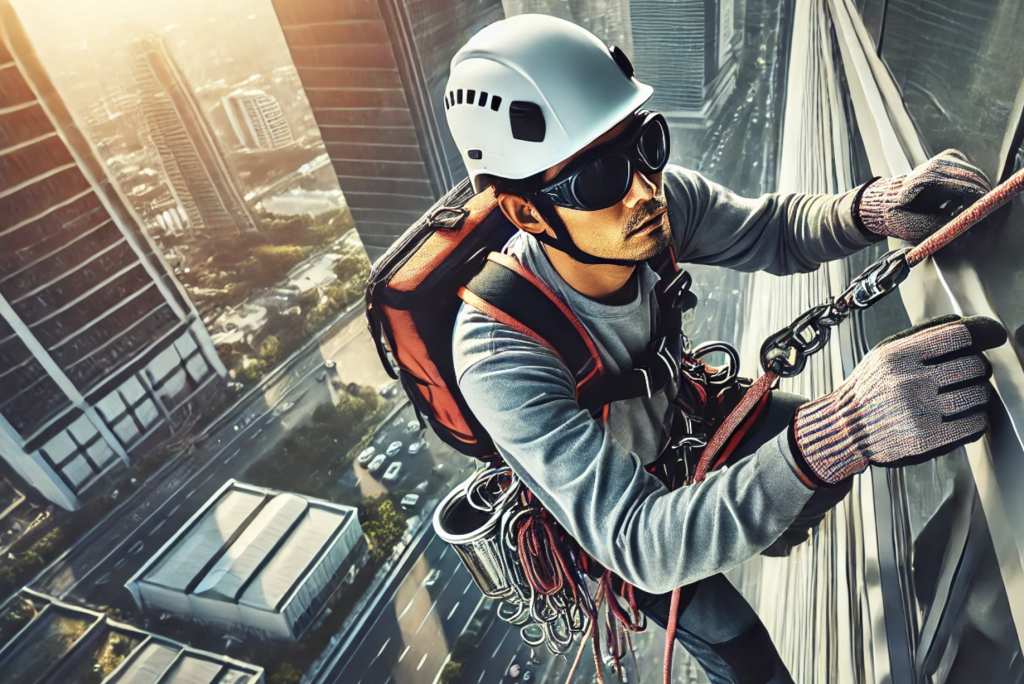10 Mistakes to Avoid When Ordering Industrial Climbing Services

Industrial climbing is a modern and efficient method for performing high-altitude work in hard-to-reach places. However, to avoid problems and receive quality services, it is essential to choose the right contractor and consider several key aspects. In this article, we will examine ten common mistakes that clients make and provide tips on how to avoid them.
1. Choosing the Wrong Contractor: How to Select a Reliable Company
One of the most common mistakes is hiring a company without proper verification. When ordering industrial climbing services, it is crucial to ensure the contractor’s reputation and experience. Pay attention to customer reviews, the portfolio of completed projects, and the presence of necessary licenses and certifications. Working with an unreliable company can lead to poor-quality results or, worse, accidents on the site.
2. Ignoring Safety Requirements: What to Consider Before Starting Work
High-altitude work is always associated with risks, so safety should be the top priority. Never agree to work without a clear safety plan, certified equipment, and proper protective gear. Make sure the contractor follows all necessary safety regulations, as neglecting these can lead to serious consequences.
3. Underestimating the Complexity of High-Altitude Work: When to Consult Experts
Many clients underestimate the complexity of working at heights and assume that anyone can handle the task. However, high-altitude work requires high qualifications and experience. Before ordering industrial climbing services, consult experts to understand potential challenges and evaluate the expertise of the climbers.
4. Lack of a Clear Contract: How to Avoid Disputes
Another common mistake is not having a detailed contract that outlines all work conditions. The contract should specify deadlines, service costs, work types, as well as obligations regarding safety and guarantees. Without a clearly defined agreement, disputes over obligations and additional costs may arise.
5. Choosing Inappropriate Equipment
Mistakes in selecting the right equipment can lead to poor work quality or even hazardous situations. Before starting work, ensure the contractor uses modern and certified climbing gear. This will guarantee both safety and efficiency in completing the job.
6. Ignoring Weather Conditions
Weather plays a crucial role in high-altitude work. Bad weather, such as strong winds or rain, can significantly complicate tasks and increase the risk of accidents. Discuss with the contractor the possibility of postponing work in case of unfavorable weather conditions to avoid potential problems.
7. Hiring Unqualified Workers
Another mistake is choosing a company with underqualified specialists. Ensure that the workers have the necessary certifications, experience, and training to perform high-altitude tasks. Work performed by inexperienced climbers can lead to damage or extended deadlines.
8. Overlooking Cost Evaluation
Unreasonably low service prices can be a red flag indicating poor work quality. Sometimes, companies that offer extremely low prices use substandard materials or cut corners on the job. Before agreeing to a proposal, assess the price-to-quality ratio and make sure all costs are included in the estimate.
9. Lack of Supervision Over Work Progress
It is essential not only to choose a reliable contractor but also to monitor the work being done. Do not leave high-altitude work unattended. Regular supervision can help identify potential issues and address them promptly, reducing risks and ensuring high-quality results.
10. Neglecting Post-Service Maintenance
After work is completed, it is important to ensure maintenance and support. Skipping this step can lead to recurring problems, especially if defects appear after the job is done. Make sure the contractor provides a warranty for the work and is ready to respond promptly to any issues.
Industrial climbing is a convenient and safe method for performing high-altitude tasks when choosing a contractor responsibly. By considering these common mistakes, you can select a reliable service provider and ensure high-quality results.
Interesting articles:
How Industrial Climbing Helps Inspect and Repair Bridges and Other Infrastructure
Facade Repair: Why Industrial Climbers Are Often Preferable to Traditional Construction Solutions
